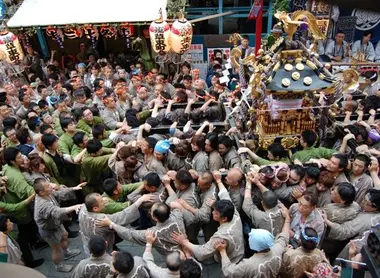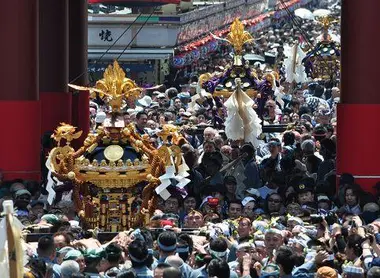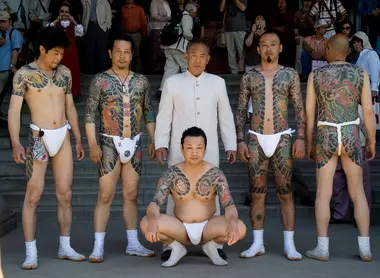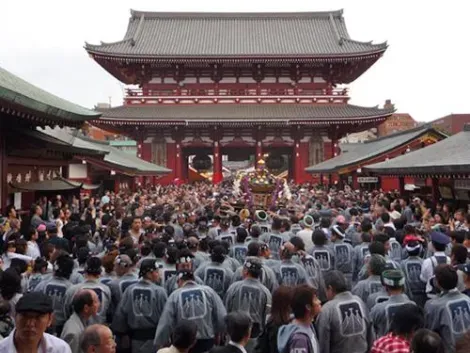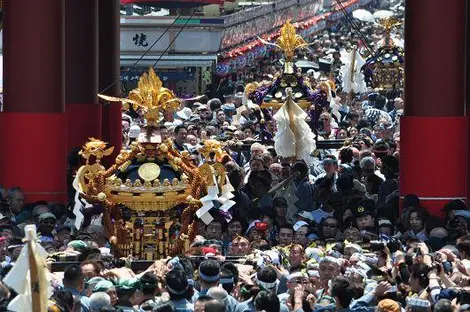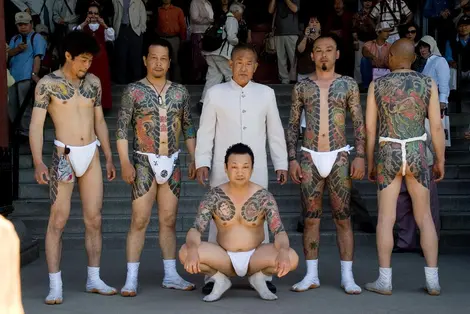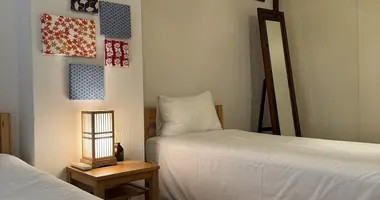Sanja Matsuri 三社祭
- Published on : 30/10/2014
- by : R.Z.
- Youtube
The yakuza festival
The most popular festival in Tokyo, the Sanja Matsuri brings together a mixed crowd looking for fun.
Sanja Matsuri wakes up the Asakusa district from its touristic sleepiness, every third weekend of May. The onlookers then invade the streets of the area to watch the parade of sacred altars, mikoshi, in honor of the three founders of the Sensoji Temple.
The two Hinokuma brothers, Hanamari and Takenari, according to legend, discovered a statue of Kannon (the bodhisattva of compassion) in the Sumida River in 628. Then, with the help of the rich owner Hajino Nakatomo, who, it is said, converted them to Buddhism, they dedicated Sensoji Temple to it. The neighboring Shinto place of worship, the Asakusa Shrine was later built and dedicated to the three friends who reside there permanently, transformed into kami deities of Shinto worship.
Sunday Altars
For the occasion,they are taken from their languor and invited to take their places, symbolically, within three mikoshi that require the strength of forty men to lift them. The religious parade starts on Saturday afternoon when a hundred secondary mikoshi, all from the district, gather at Asakusa Shrine before being carried into the surrounding streets. The three main altars make their appearance on Sunday, at six o'clock in the morning, forming the climax of the festival.
Yakuza show
This monumental gathering allows segments of the population to mix together, between which the distance is rather strict the rest of the year, for example the yakuzas. Those who expose themselves in fundoshi (sumo underwear), without reserve or threat in their simplest apparel to proudly display their many tattoos that often include clothing, forever affixed on their skin. In addition to demonstrations by the yakuza, which border on the ridiculous (but do not risk laughing), Sanja Matsuri stages many craftsmen and artists performing for the occasion, including actors dressed as cranes.
Friday afternoon is dedicated to a musical parade where musicians experience the honor given to the kami and are also carried, to Sensoji Temple this time. The dancers who perform Binzasara, a prayer for the fertility of the earth, captivate the audience throughout the afternoon. The festival ends on Sunday at 8 p.m. when the kami return to their homes and daily life re-establishes itself in Asakusa, until the following year.

